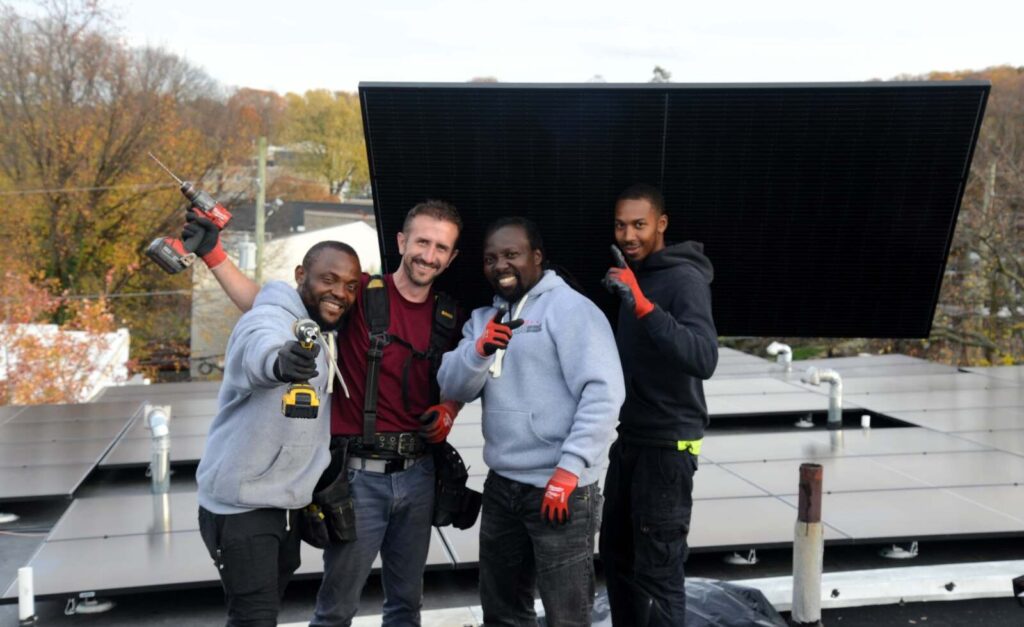
So you’ve approved a contract, and Uprise has set a date to install your solar panels. It’s almost time…but what do you need to do to get ready for solar installation day?
The good news is: not much. Now’s the time to sit back and let our installation crew do what they do best. They’ll arrive bright and early — we’re fueled by the sun just like your new solar panels — between 8am and 9am.
From there, they’ll set up the site to meet Uprise’s safety standards. Expect a truck parked on your street or in your alley; parking as close as possible saves our crew a lot of work carrying equipment to your home. Depending on the space around your home, our crew will likely set up in your backyard, with a ladder, hand tools, power tools, wires, conduit, racking equipment, and the panels.
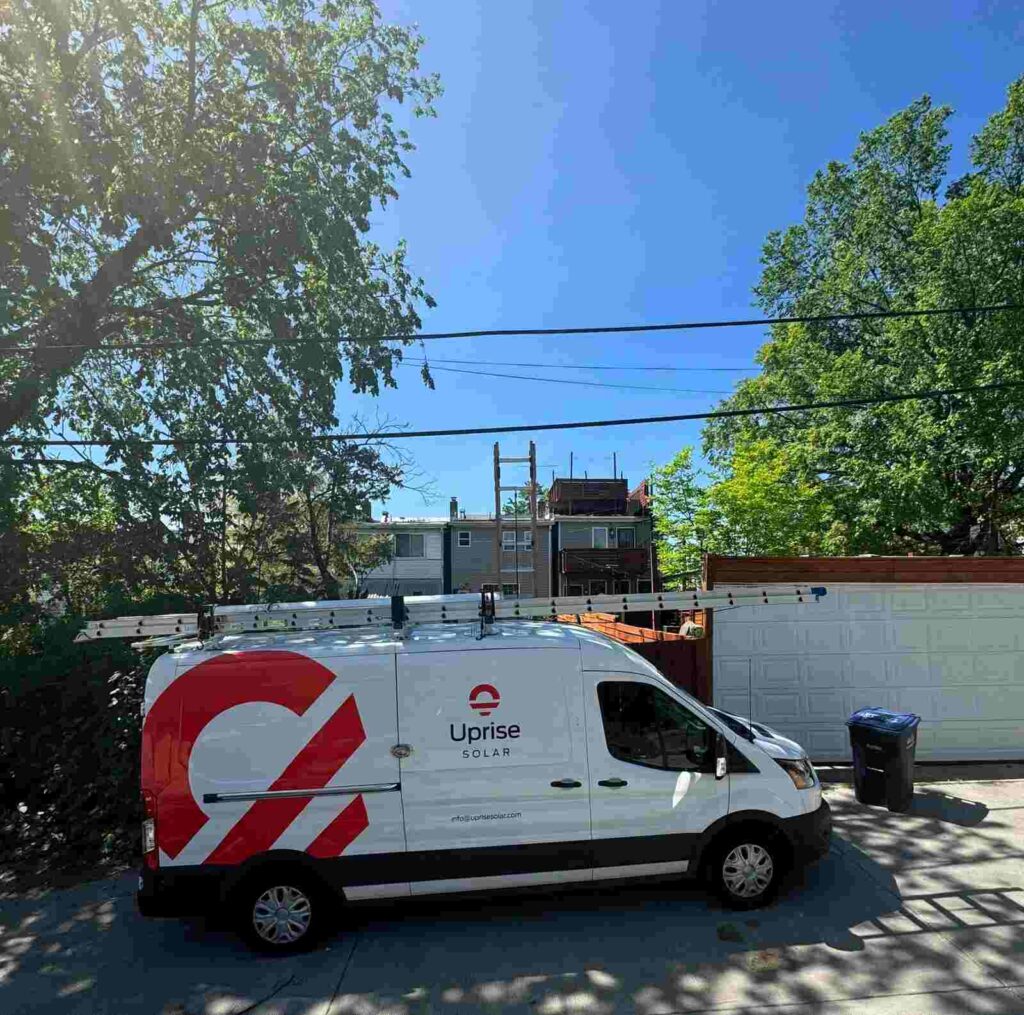
What does the solar panel installation process look like?
Some solar companies divide into roof teams and ground teams — the two primary locations where solar installation work happens. At Uprise, we work together as one team.
If you’re inside the house during the installation, you may hear drilling. The solar panels don’t simply attach directly to the roofing material — our team needs to build up a framework first. The framework is also known as a solar racking system. At Uprise, we use IronRidge racking.
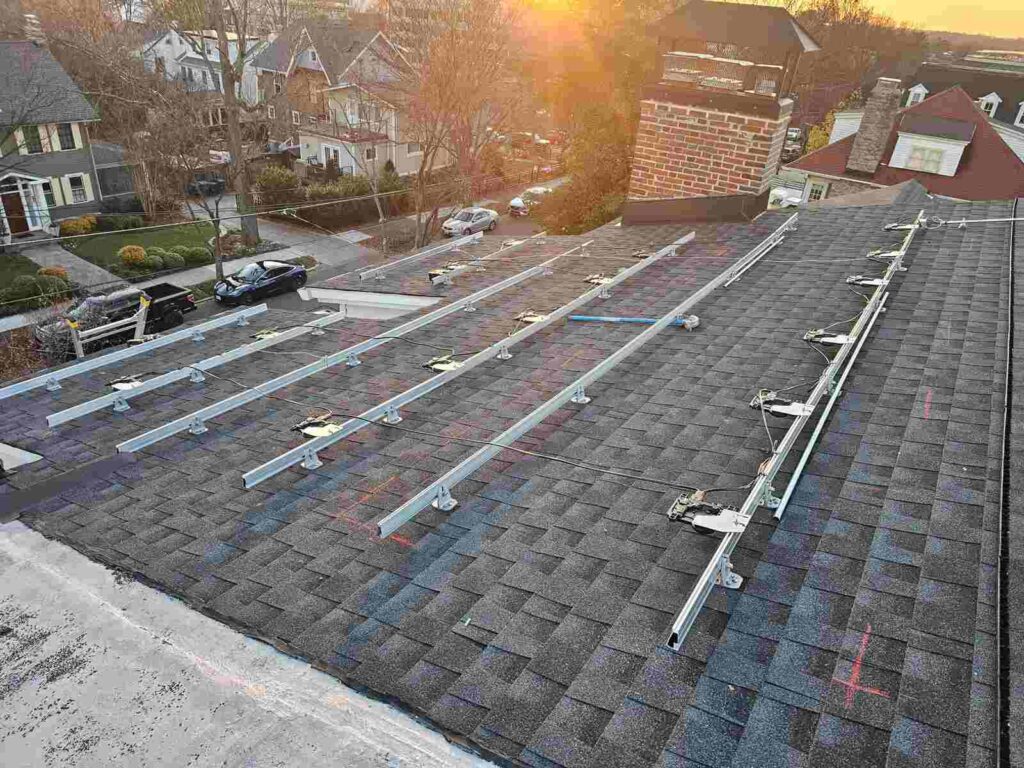
If your roof is pitched — think shingles, on a slope — the crew first installs what are called feet. The feet attach to the rafters of your house, and rails are bolted onto the feet. This construction helps keep the whole system stable and study, so it will survive wind and snow and rain and whatever other weather the DMV area throws at us.
The IronRidge solar attachments we use come with multiple water seal ratings and a 25-year warranty. Check out the spec sheet to learn more, or watch the video below to see how it works.
Once the rails are in place, the crew bolts Enphase microinverters onto the rails; each panel attaches to its own microinverter. Microinverters convert the electricity your panels generate (direct current) into a type usable in your home (alternating current). We also monitor your solar panels with the microinverters. You’ll receive access to the Enphase App after installation so you can monitor them too.
Finally, it’s panel time! The team connects each panel to its microinverter, making sure all wires are tucked into the rail and off your roof, and then bolt the panel in.
We stand by our work! If an unanticipated issue arises due to our workmanship, we will be more than happy to come out and fix it. Our team works to make sure the job is done right, every time.
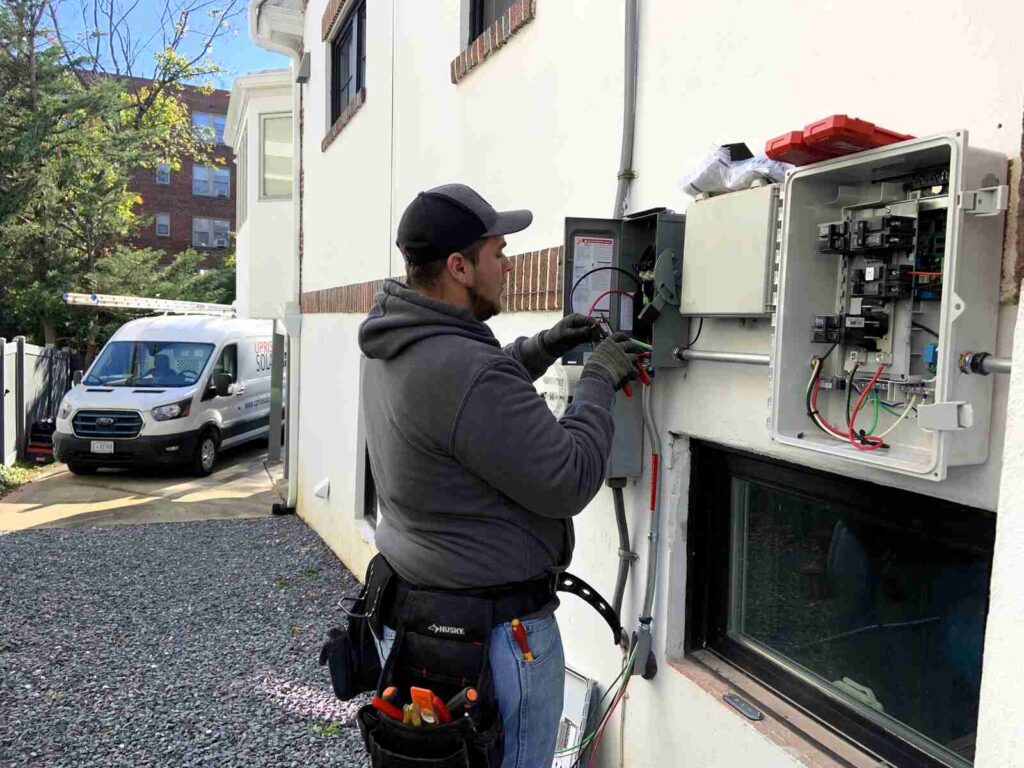
Okay, everything’s in place. But how does electricity from the panels power my home?
Wiring from the panels connects inside a junction box on the roof, and our team runs those wires through metal conduit down to the ground so our solar electrician can connect those wires to your main service panel (also called a breaker box). Depending on the location of your main service panel, the crew may need to drill a hole into your home to run the conduit neatly to your main service panel. The conduit runs through that hole, and then the crew adds weather-safe putty around it. The solar electrician will make that final connection to a new breaker in your main service panel.
If you’re curious about the details of how light becomes electricity, check out our Solar 101 blog post.
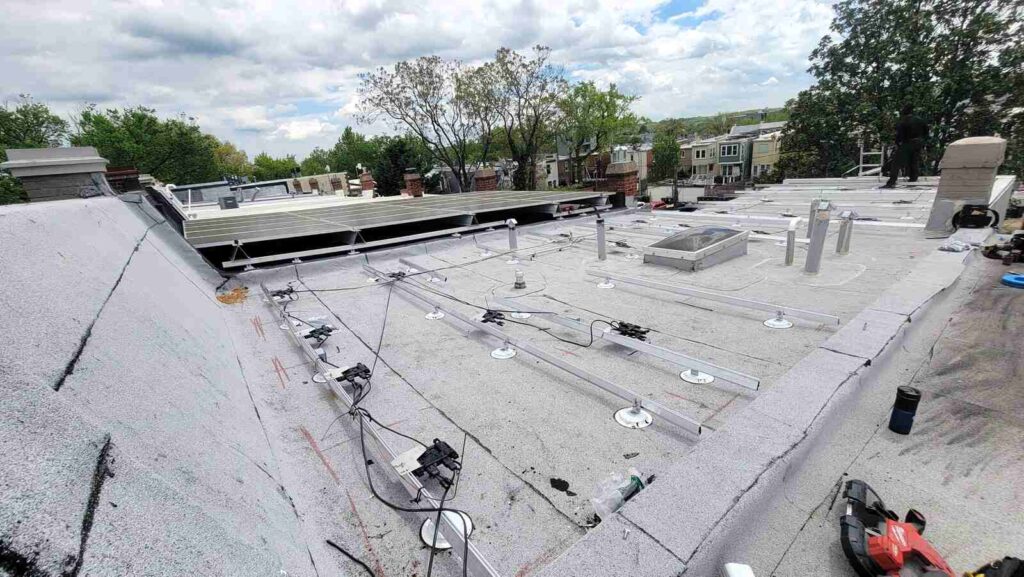
What if I have a flat roof?
Flat roof solar installation is similar to pitched roof installation: the crew needs to erect a framework for the panels. We start with Unirac Flashloc solar attachments, which connect to the roof surface with a sealant. The crew bolts the rails into the solar attachments, and similar to a pitched roof, the panels attach to the racking. Check out the video below to see Unirac Flashloc in action, or read up on the spec sheet.
Uprise has also done what are called parapet to parapet flat roof installations, where the racking material attaches to the parapets (or party walls), those the brick walls sticking up on either side of your roof.
Those are the installation basics! Next, let’s go over some other questions you may have about solar installation day.
Do I need to be home during installation?
You do not have to be home for the entire installation. We recommend you’re home when our team arrives, so you can meet them and ask any questions. If you are home, they’ll be happy to walk you through the process as it’s happening as well. But you do not need to be home the entire time, as long as the crew has access to work in your backyard or alley, and can also access your home to use the bathroom and make electrical connections.
Do I need to provide food or drinks for the team?
No, you don’t need to provide drinks or food for the install crew. Although we always appreciate it if you do, it’s not necessary!
Will the installation be noisy?
You may hear some noise, either inside or outside the home. It won’t reach unsafe levels; ear plugs are not necessary on a solar installation site.
Can I get up on the roof and watch the installation happen?
Unfortunately, due to safety concerns, we can’t let you up on the roof during the installation. We’ll have a lot of equipment and power tools up there, and once the rails are up, they can be a tripping hazard. Our crews are trained to work around these obstacles.
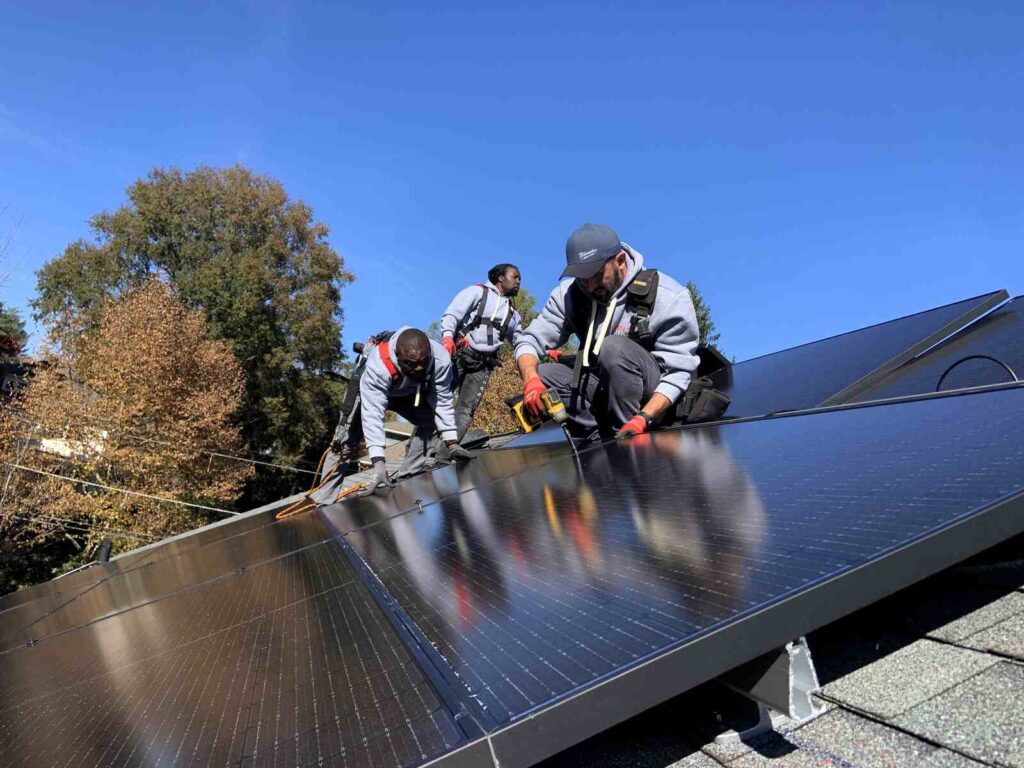
What happens if it rains or snows on my solar installation day?
If your roof gets wet, it’s too slippery and dangerous for our team to be up there installing solar. We’ll reach out to you to reschedule if weather gets in our way!
Will I be able to start receiving power from my panels right away?
While your panels will technically be ready to go once our crew completes installation, we will need to wait on official authorization from your utility company (Pepco, BGE, or Dominion) to give us permission to operate, or PTO. Uprise works to speed the process along by having an inspector come out on the last day of installation to look over your system so we can submit the paperwork as quickly as possible. The utility company may take two to four weeks to get back to us (we are not in charge of that number, so it may vary).
Once they give us PTO, it’s go time. We’ll officially turn your panels on and you should see a difference in your power bill during the first billing cycle that the panels are operational.
Any other solar installation day questions?
Give us a shout! We’re happy to walk you through the solar installation details. Call us at (202) 280-2285 or reach out online.
